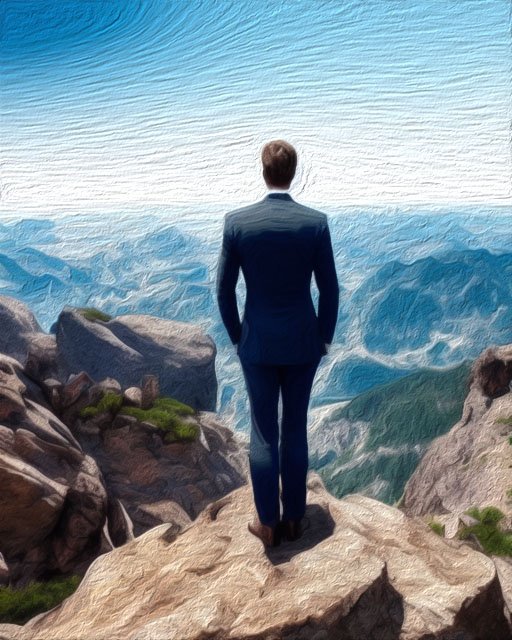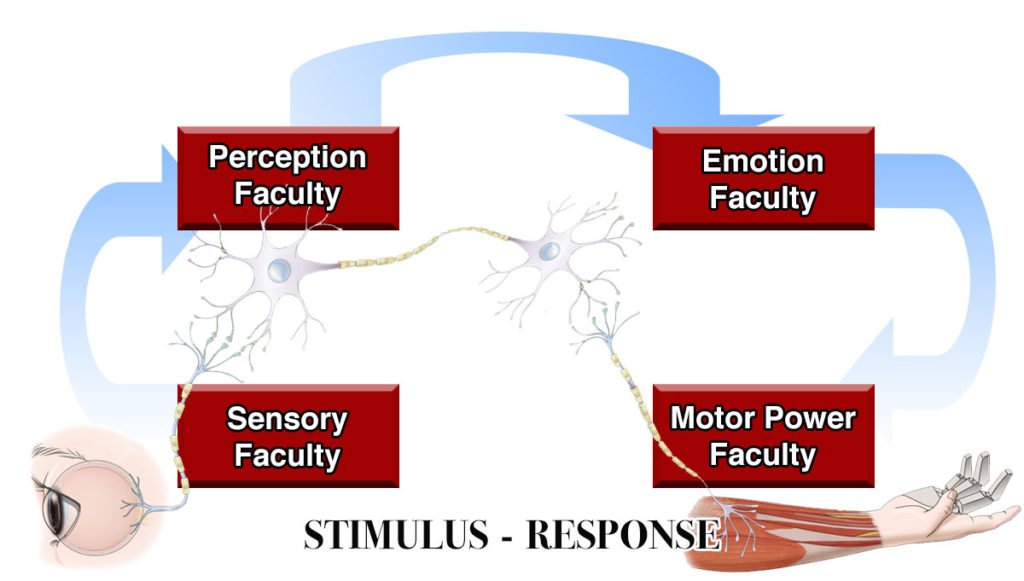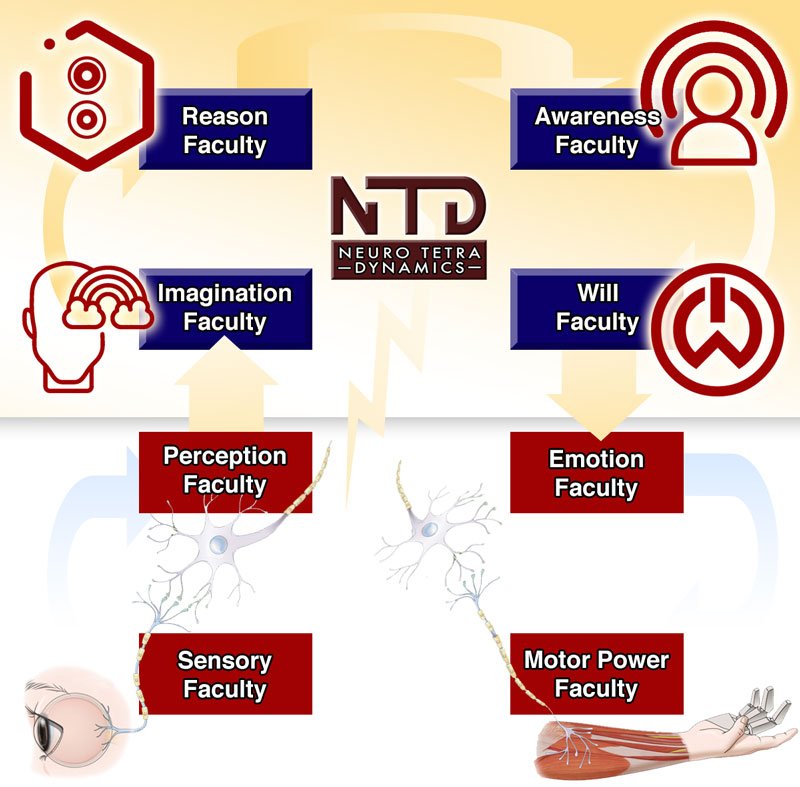How Leaders Can Increase the Effectiveness of Knowledge Workers for the 21st Century and Beyond
(The Science of Neuro Tetra Dynamics)
From the Desk of:
JOHN ANGHELI
B.Arch, M.A. M.Ed M.Bus
Leadership Counsellor
Mine for More Meaning? Sounds Great!
Let us get started!
 Great going. But before we get into this question, let’s just address the “elephant in the living room’ that is most present for some – which make one fail, before we even get started…
Great going. But before we get into this question, let’s just address the “elephant in the living room’ that is most present for some – which make one fail, before we even get started…
Are You Set Up For Optimal Attention, Right Now?
Why? Well, let us consider the way we gather info from our favorite ‘smart device’ today.
There are dozens of screens and apps open. And so when we would try to focus – no sooner are we bombarded with a schizophrenic mix of messages – from cosmetics, to the news, to celebrity gossip, to the weather, and to some guy’s latest rant that you acquainted years ago. SMS pings, red alerts for new posts, and new system updates… Argh!!!
Like in those World War movies, where hundreds charge and most get mercilessly get mowed down by machine-gun fire – so is the battle for our attention now raging on.
Because even though ‘in theory’ we lay amidst endless array of opportunities – in actuality, most of us live in a techno-rat maze. It’s set up so we make lots of noise, share lots of opinions, and somehow appear to be moving, but if we step right back…
… we’re just spinning in an endless, meaningless, merry-go-round.
How to Successfully Start
If you want to stand a fighting chance, here’s how to get started:
Make now a decision to focus and concentrate.
I know this sound silly, but there’s power in this – so let’s do these 2 things first:
1. If you have any distracting sounds in the background, please turn these off. (Have no auditory clutter)
2. If you’re on a computer with many windows, make this page full screen. (Have no visual clutter)
 Why John?
Why John?
Because, the path to becoming a meaningful change agent as an IT leader can potentially begin right here and now.
But we must face up to the #1 factor for why wisdom often does not get through…
Our attention is often not there!
What you’re about to read is different.
This is not trivial entertainment… It’s not the ever-changing news… It’s not about the consumption of things…
This is a message written for the one who’s starting to see through the meaningless myth that post-modernity propagates, and is looking for something different.
This is a message written for the one who has had enough of style over substance… enough of pretty speeches and wishful thinking that produce no results.
This is a message written for the one who wants to get back to the Truth, the whole Truth and nothing but the Truth.
You owe it to yourself to give your full attention.
– So If You’re With Me Now –
LET’S START
The aim of this letter is to showcase how ‘neuro-tetradynamics’, is a new methodology for how to reimagine and recognize the meaning of one’s life, and with this realization, comes a quantum leap in your leadership abilities.
That’s because we will be talk directly about the unique capabilities that humans have to become aware of meaning, to reason about it, to imagine the potential for meaning, and ultimately, to will it to be.
These are in fact the first principles of what it really means to be human.
And if we are to apply and cultivate these four faculties – these uniquely human endowments – we can overcome the greatest source of psycho-pathological problems (or neuroses) that plague both organizations and the lives of its individual members.
But before we get into this, let’s start with the problem itself. That is, let’s start with the mindset that lacks a will to meaning and its noticeable outwardly effects…
Consider the Great Paradox of Our Times
Today, despite having the greatest amount of wealth, the greatest range of freedoms, the greatest range of knowledge and possibilities, psychologically speaking – or what is present in our lived experience – is almost the exact opposite.
Today, we live in very psychologically miserable times. According to Harvard University, within the next decade 1 in 2 people are expected to be depressed, and almost 1 in 3 are already.
The leading first world country, the USA, right now consumes more prescription drugs than the rest of the world combined. Even children are given mind-bending drugs, as to apparently cure their failing mental condition.
The pursuit of happiness, as enshrined in the defining document of the very first modern democracy, the American Declaration of Independence – where all men have been given inalienable rights, to pursue life, liberty and happiness – has, in the last count, effectively become the liberty to get sedated.
Vast segments of our cultural landscape,
are now chasing ever-changing means of sedation.
 What is ‘sedation’?
What is ‘sedation’?
The dictionary definition is, “to use drugs or other means to make someone calm or to make them go to sleep”.
Consider that startling realization, that a large percentage of men and women throughout the Western World, are sedated on one or more forms of drugs, at multiple points throughout their day!
They will use these sedatives to feel better about themselves, or so that they can continue to function, in what they feel to be a corrupted and corruptible culture.
And what are these drugs?
Well that’s the thing – drugs come in so many different forms today, that we don’t even see them for what they are.
We ordinarily tend to think of just the hard illegal drugs like narcotics, Marijuana, ecstasy, speed, and so on. And certainly judging from the number of deadly overdoses, (that claimed the most talented of musicians – from Elvis, to Michael Jackson, John Bonham, Jim Morrison, Jimmy Hendrix, Whitney Houston, Amy Winehouse, Prince… and many more), to the daily addicts we notice all all around us, illicit drugging is at an all time high… (no pun intended).
But there are also so many legal drugs that also just as effectively sedate us. Huge proportions of use alcohol as their drug of choice instead – i.e. in the US, 17% of adults binge drink and 6% report as heavily drinking; and in Australia and UK, the numbers are quite similar.
Then there’s the whole range of pharmaceutical drugs as prescribed by big medicine. 66 percent of all adults in the United States, use prescription drugs in some form or another. (That’s 2 out of 3 adults!)
Then there are also the hidden, inner drugs that we don’t really think of as drugs, because these chemical concoctions are manufactured within our own bodies. i.e.:
There’s the inner sedation that comes streaming countless pornography; or the sedation of binging on hours upon hours of gaming, or in front of a TV, or internet… or the endless consumption experiences facilitated by shopping malls and virtual internet malls…
So it’s no exaggeration to say that most of us today, we are drugged out of our minds. Both from within and from without, both from the inside and from the outside, we seem to be wanting to tune out of our mind, the actuality of what’s really happening…
‘Out of our minds’, simply meaning that –
We are out of the mindset that nature has endowed with,
and instead, we live amidst a meaningless mirage that makes us miserable…
which in turn, makes us want to take on even further chemical sedations.
We’re on a losing pursuit to try to stimulate ourselves to feel better. But no matter how hard we spin our wheels, like that Rolling Stones’ song once said it, “we can’t get no satisfaction”.
The saddest part being that many children today start off their life within a state of deep sedation, where…
- Little babies are plonked in front of a tablet or mobile as soon as their eyes can move;
- Then they are given medication for their apparent inability to focus or think;
- Then they will enter public education – which is to then foster within, all kinds of grievances and distortions about their ‘problematic’ identity or ‘problematic’ society… and which will have nothing to say about their purpose in life. (outside of them being a cancer of the planet, for breathing out carbon!)
Many will probably never even realize the dark matrix that has been placed upon their minds, without their consent. They’ll just assume that what they have ‘learned’, that this is ‘reality’.
Is it any wonder then that depression in children is the highest growing segment in our population?
How could it be otherwise?
Notwithstanding the large portion of population that does have a genuine need for medical drugs – the deeper question is:
“Is the human experience that terrible that the majority needs to be sedated as to live it?
Or can it be that we have learned to seriously warp our perceptions,
so that existence appears as insufferable and a great bore?”
I’m going to make the case that it’s a case of the former. And that because we have been trained in a condition of learned helplessness, and are unable to be in control of who we are…
 My Sedation Story
My Sedation Story
For me, the way out my own ‘sleep-walking’, came through an encounter with a near-fatal car accident (as covered in my documentary).
It was then and there that I made a decision to reawaken. So I went out into the wildness to spend 40 continuous days alone, to deeply think.
For here was the truth of it, up to that point:
My head was filled to the brim with all kinds of knowledge on how to change my psychology. Yet, after a decade of collecting information, I still was not able to implement what I knew.
For even as my head was full of different ideas about the subject, the truth of it was that my life had not changed for the better, one little bit. In fact, I had to lie to myself because it was brutal.
I had completed three degrees, set up a coaching practice, and yet I was financially on the brink of bankruptcy. I was racking up credit cards debts into the tens of thousands in the process.
Physically, I was weak and unfit. I smoked. I drank. I puffed weed. A relationship with a better half was non-existent – although I had an unhealthy addiction to ‘online romance’, if we may call it that… And spiritually, in my being, I was hollow and constantly hungry for that indefinable ‘something more’.
So I did what most of us are taught to do and what we see everyone else doing
– create positive impressions and ‘fake it ’till you make it’.
But now this near-fatal car accident exposed me to myself.
All this accumulated knowledge from all the fashionable gurus and mainstream education, far from making me successful, did nothing of the sort. I even wrote thousands of pages on the subject, (as if I had the answers), but my life hadn’t change for the better at all for it!
And if I had died that day and had to tell God who I had become in life, and what did I do with the privileged position afforded me – I felt pathetically small and stupid… It was depressing.
It was sheer desperation that pushed me to try out this rite of passage that the biggest names in history all undertook. (i.e. like Moses who spent 40 days on Mt Sinai; or like the Buddha who meditated for 40 days under a Bodhi tree; or like Jesus who prayed for 40 days in the Judean desert, and so on…)
For what always seemed curiously strange to me, is that even with the greatest sages of all in our history, their philosophy and teaching only came to light, only after they spent 40 days out in the wild. (and not before…)
Jesus said very little prior to his 40-day intensive out in the wild. It was the same story with the Buddha. His enlightenment only began thereafter. (and so it was with everyone else)
What if this practice could actually change my life and reveal to me something profoundly influential?
What did I have to lose, except my excuses?
 A Hidden, Dirty Little Secret
A Hidden, Dirty Little Secret
For here is the dirty little secret that very few ever talk about when it comes to change:
We all like to talk about ‘change, change, change’,
precisely because we find it so hard to do it ourselves.
It’s psychological projection.
There’s so much talk about the worries of ‘climate change’, or ‘political change’, or ‘social change’, precisely because we feel helpless about how we can personally change. (So why not try to change the world outside of us instead?)
Like the Russian novelist Leo Tolstoy observed two centuries ago,
“Everyone thinks of changing the world, but no one thinks of changing himself”
(By the way, Tolstoy did not live to see that in fact, a few decades after his death, Russia’s generation of unchanged people did eventually come to ‘change their world’. In 1917 they established the very first communist state, the Soviet Union. And the rest is, as we say, ‘bloody history’…)
So let’s consider once again…
Realistically, how likely is an average person to change one’s life, by design?
I mean, beyond the clichés, platitudes and tired expressions about making life changes – how capable are we to really do it?
Well, here are the stats:
Surveys show for instance that 98% of people who make New Year’s Resolutions never complete them, and for most people, resolutions fizzle out in just one week. Of the people who set formal goals, 93% also failed to reach them.
This doesn’t sound at all like what pop self-help would say, does it?
Now, you may be thinking that it’s perhaps because most people, they’re just not ‘serious and motivated’ about New Years’ resolutions or even goal-setting workshops… Perhaps they need a greater ‘leverage to change’ and the results would improve.
But what if the motivation was ‘Big Enough’, how likely are we to change?
Well here is a shocking fact, as covered in the book, ‘Change or Die’:
There was a major research that tracked the success rate of people who following a near fatal heart attack.
As a result, doctors intervened with the advice to change their diet, they were given all the information on they needed on what to eat and don’t. And they were warned that if they don’t follow this new diet plan, they will most likely die.
So with this real ‘change or die’ setup – how many people do you think were able to change what food they ate?
As research discovered, long term, only 1 in 10 could! The other 9 in 10 could not, even as making this change had death itself was the ‘great motivator’.
The majority, failed at this in just a matter of weeks.
So even with the most extreme of motivations – based on medical advice and will power, 90% of people are not able to change.
Furthermore, consider that changing something like what you eat, is relatively simple to control. Food is a tangible, material good that you can quite easily regulate. You just need to buy the better foods, and have them available on call. (After all, no one forces you to put bad food in your fridge.)
 So how much more difficult is it then to change how you think, or how you speak, or how you feel? (i.e. the hidden, intangible factors of our lives that determine what decisions we take, in kind)
So how much more difficult is it then to change how you think, or how you speak, or how you feel? (i.e. the hidden, intangible factors of our lives that determine what decisions we take, in kind)
How much more slippery is it to change intangible things like these?
For while it seems like almost everyone has some advice for what changes we need to make to live a healthier, more fulfilling life – armed with all these ‘facts and suggestions’ – the odds are very, very small indeed, that most of us will do anything with them. Ever.
But you probably already know this from your personal experience. The truth is that while everyone talks a ‘good game’ – the dirty little secret that few acknowledge is that…
Mastering Yourself Is the Most Difficult Thing in the World.
Yet nevertheless, it’s also the most necessary thing. For it’s on this change alone, that all other changes can be properly made.
Which begs the question – what can we do about it?
How can we empower the changes we want, for good?
As leading others in our organizations, is there something more that we can do as to positively influence changes, (and not just put on more vain and empty talks)?
Change The ‘Operating System’ Of Your Soul
To answer the question above, I want us to consider something different… i.e.
Genuine life-change begins only when we go to the root cause of all life change efforts. That is, the way that we are motivated – in what strikes us as worthwhile to do, to think and to be.
After all, all change efforts come down to the question of how motivated are you to do or not to do something.
Are you afraid to do something? Don’t have the ‘self-esteem’ to execute it? Don’t have the energy? Perhaps you can’t be bothered?
There’s a crude saying that, ‘when someone places a gun to your head, then almost all things appear as possible to do’. What you and I can or cannot do, this can change enormously in the context of ‘deadly threats’, doesn’t it?
So the power of fear is a powerful driver for change… We know this much.
But what really drives us when we are powered by freedom instead?
What happens when we live in a free society – where we can freely elect what are to be our choices, without external coercion?
 I’d like for you to consider that under this condition, what ultimately drives us, is the map of happiness of happiness that we have deep, deep within.
I’d like for you to consider that under this condition, what ultimately drives us, is the map of happiness of happiness that we have deep, deep within.
Under a condition of freedom, what we freely choose to do or not do, is based on what we believe at a gut level, to bring us to happiness.
This is by no means a new idea. Philosophers observed thousands of years ago that happiness is the ultimate compass that we have, for how we orient our lives.
Whether we are conscious of this fact or not, we all get up each morning and chose to do what we actually do, as but a means towards this implicit end.
This is why if you question any person about their choices – i.e. ‘’why did you do that?” and “what did you do that for?” – and you probe deeper and deeper, we all end up saying the same thing, “because I believe it would make me happy”.
Therefore, to fundamentally change what we do, or to influence fundamentally another to change – we must address what we believe that happiness is, and how how happiness comes about.
Our deep-seated belief about happiness, this is arguably the most important idea that we have in our psyche. This idea alone, fundamentally orients our entire life.
Why? Because happiness is the grounding for our entire range of motivations. It is the fountainhead – the emergent framework upon which all other ideas rest.
As such, it’s useful to think of this internal map, to be like the ‘operating system’ software that computers use.
In case you’re not familiar, the operating system (or the O.S.) – this is the overarching software that commands, manages and organizes the entire range of electronic components, (or the hardware) of a computer. On PCs this software is known as Windows, on Apple computers it’s the macOS, while on most mobiles and smart TVs, it’s Android.
The operating system is the foundational software upon which all other applications build on top of – whether this application is a word processor, a video editor, a dictionary, a game and so on.
The O.S. in fact determines what kind of applications can or cannot run. This is why when you purchase any kind of software, this is the most important thing that must be first assessed. The appropriate O.S. must first be there, otherwise the application will not run, (or sometimes even recognized).
In the same way, our internal operating system is grounded in what we believe that happiness is.
The core, unconscious ideas that we have about happiness, trigger our entire range of motivations that instinctively guide us towards:
- what success and failure means;
- what we think is of value in this world, (inclusive of our own self);
- what love is; what freedom is; what hardship means and how we are to respond… and on and on.
This foundational human O.S. manages and integrates all dimensions of self. It determines how we organize our lives in order to find fulfillment, practically – i.e. what is happiness for the body, the mind, and for the social-spiritual dimensions of self.
In short, the decisions and choices that we make or don’t make in life, build on top of this hidden Operating System. And like with computers that have a dated operating system, you cannot run certain ‘life changes’ (i.e. new applications), without the supporting O.S. behind it.
In the feature documentary we covered that there are two main operating systems that we have, when it comes to our pursuit of happiness (i.e. the belief system from which we make decisions):
 1. The Aesthetic – where we believe our happiness emerges from pleasure or making your life feel good; or
1. The Aesthetic – where we believe our happiness emerges from pleasure or making your life feel good; or
2. The Ethical – where we believe our happiness comes from our self-actualization or by integrating Being values through your choices.
Whether you have primarily an Aesthetic or Ethical O.S., this will determine the entire range of applications that you can or cannot run, in your life.
For example, just consider the prior case for instance, where a heart-attack survivor is given the instruction by their doctor to eliminate certain foods from their diet, and why 9 in 10 fail.
If the existing operating system is primarily aesthetic – how likely is a change effort to stick? After all, someone is asked to give up foods that previously brought pleasure, and instead are asked to eat things that are somewhat ‘unpleasant’.
This reminds me of the joke once told by Johnny Carson:
“I knew of a man who gave up smoking, drinking, sex and rich food.
He was really healthy, right up to the day he killed himself.”
If a change effort contradicts what we fundamentally believe at our core to be our happiness in life, we can only go so far, and only for a certain time.
Like an internal elastic band that we stretch against our core beliefs, the further we stretch ourselves into the realm of the ‘unpleasant’, the stronger the pull to snap back becomes.
And by ‘belief’ I don’t mean what we ‘say’ with the mouth – but what we believe at a gut level, and manifest in our actions. We demonstrate our actual beliefs, by how we act, and not really what we say.
 This is often a tricky thing to understand, so let’s put it this way… Imagine a good friend of yours gave you a call, and he emphatically told you that you have a wild, man-eating tiger in your bathroom. He then requests of you, “please, believe me”.
This is often a tricky thing to understand, so let’s put it this way… Imagine a good friend of yours gave you a call, and he emphatically told you that you have a wild, man-eating tiger in your bathroom. He then requests of you, “please, believe me”.
The true test for whether you believed this or not, is not whether you said, “Yes friend, I believe you”.
The real proof of belief is whether you rang up wildlife services and refused to go anywhere near the bathroom. If you actually opened the door to check if a tiger is in there, you did not really ‘believe’. Deep down, you believed he’s probably pulling your leg.
Belief as such, is that gut level ‘truism’ about reality. In the same way, our deep-seated operating system about what happiness means is not revealed by our words, but by our actions and what our life choices have to say about it.
So if we return once more to the scenario we started with, we can just connect the dots.
In the above scenario, if one is aesthetically grounded – that is, their happiness in life is to maximize pleasure – when a doctor says that in order to live longer, one ought to give up rich foods for instance, inevitably this creates a major dilemma.
On one hand, there’s the pleasure of living for longer in the long term, but on the other hand, this conflicts with the short-term happiness of pleasurable food today.
So from this point on, one’s motivation is in continual conflict. For if happiness is pleasure, to purposefully exclude the very things that brought enjoyment prior, is, like Johnny Carson put it, a recipe for wanting to kill yourself…
If the O.S. is aesthetically grounded, the system is set to crash – for with this new change, one’s pursuit of happiness stretches in two different directions.
But let’s consider what it would be like to have an ‘Ethical O.S.’ by contrast:
What would happen if a person had connected at a gut-level, a belief/ a knowing – that their happiness emerges whenever he or she pursues their ethical growth and self-actualization instead?
 Well, if this is the case for how they process their happiness, then this person could give up the pleasure of rich foods long term – because their happiness could now emerge from the formation of greater self-control or temperance in life, instead.
Well, if this is the case for how they process their happiness, then this person could give up the pleasure of rich foods long term – because their happiness could now emerge from the formation of greater self-control or temperance in life, instead.
In the above scenario, the decrease in short-term pleasure would be offset by the happiness of virtue formation. And so this person would be able to stick with these new changes, long term.
Upon an Ethical O.S., the application of running a new, less pleasant tasting dietary change, (i.e. the new software app), this can now install congruently. That’s because on this O.S. one’s happiness is not only not diminished, but can instead, be further enhanced.
The Ethical Happiness framework is superior to the Aesthetic, because it enable countless positive changes, while still being able to enjoy pleasures, in the right order.
For here one is no longer chained to the pull of pleasures and their unruly wants. With an Ethical O.S., one is able to manage their own pleasures, and in certain cases, be empowered to choose against them – if this be of greater benefit to one’s personal well-being, or their family, their community, their world.
It’s only with this framework, as Mahatma Gandhi put it, that we can become the change we want to see in our world. It’s with an Ethical O.S. that we can be the kind of role model, where we influence through our example and excellence – and not just through mere ‘techniques’ and ‘hacks’.
Which brings up the question, ‘How do we do this?’
“How Can Your Update the Aesthetic O.S., To a Genuinely Ethical View of Life?”
The Four Faculties Framework:
Tetradynamics and How to Make Meaningful Changes
 Like featured in ‘The Great Aha!‘ documentary, back in 2009 when out on Ben Lamond mountain, it there dawned on me that…
Like featured in ‘The Great Aha!‘ documentary, back in 2009 when out on Ben Lamond mountain, it there dawned on me that…
Ethical happiness is not just a higher mode of being,
but it is a mode of being that’s uniquely available only to humans
and the faculties we uniquely have.
What does this mean? Well, let’s put it this way:
The standard view for how humans and animals process our world, as taught in social science, is through the stimulus-response model.
In brief, it states, that when a stimulus is presented to an animal, this stimulus (or event), produces in an animal a particular response – which in time ‘conditions’ the same tendency in the future.
This is the base mechanism for why we do what we do. The Stimulus-Response model is comprised of four basic animal faculties – the faculties of sensation, perception, emotion and motor powers.
So as the diagram below shows, we first notice a stimulus in our environment with our Sensory Faculty – let’s say in seeing and smelling a ‘hot dog’. This raw sensory data then enters our Perception Faculty, which then interprets what these light patterns and smells represent – in perceiving the data as a whole, as a ‘hot dog’.

The perception of the hot dog then enters our Emotion Faculty, from which we then derive a feeling as to whether this object leads to a feeling of relative pleasure or pain. If pleasurable, the emotion gives us the impetus to move towards the hot dog, or if painful, we get the impetus to move away from it, (or if somewhere in between, in being indifferent…)
From this emotional push, we then precede to act with our body – we engage our Motor Power Faculty – where if a hot dog means pleasure because of its taste or hunger, we stretch out our hands and grab it, if we’re neutral we walk right past it, or if we’re repulsed by it, we may complain to about it.
Furthermore, if this is the very first time in life that you encountered a hot dog, (the ‘x’ sensory object), the way you perceived, felt and responded to this, (the ‘y’ response) – this automatically, without any conscious control, links up in the brain. So that if sensation ‘x’ happens again, you’re more likely to behave in exactly the same way as before, with ‘the y response’ .
With further follow up stimulus-response events of the same kind – the neuron links thicken, and form strong cable-like connections between these two instances, making it less and less likely to respond in any other manner.
 This is a a very simplified explanation, of course, but in essence, this is the science and practice of ‘classical conditioning’. The physiologist Ivan Pavlov demonstrated this in action, with an ingenious, simple experiment…
This is a a very simplified explanation, of course, but in essence, this is the science and practice of ‘classical conditioning’. The physiologist Ivan Pavlov demonstrated this in action, with an ingenious, simple experiment…
Pavlov set up a test, where several dogs, on a leash, awaited their next meal. The dogs would see and smell the food coming, they would perceive these sensations as food, they then anticipated the pleasure that food would bring about, and so, the dogs’ motor response was to salivate in eager anticipation.
But as these dogs were salivating and engaged in this whole stimulus-response arc, Pavlov also blew a whistle. At the next meal, he blew the whistle again. And so with the meal thereafter…
Once a few experiences like these were repeated, the food was not given at all, and only the whistle blew. And sure enough, the dogs were now fully salivating – even as the ‘whistle’ had nothing to do with a hunger response.
The entire stimulus-response arc got neurologically linked to the whistle, so the same pleasurable response became automatic.
Furthermore, these dogs now had a permanent new disposition to associate pleasure with the sound of a whistle, which they could not change.
As such, because we’re also members of the animal kingdom, and have the same faculties, we can also be conditioned by linked up events/ stimuli that bring us pleasure. 
Think of what advertising does. In essence, it links a product with pleasurable ideas and imagery. And when this advertisement is repeated over and over again, the consumer forms a new stimulus-response-like chain in the mind.
Linking happens through the quality or the number of pleasurable associations, or both. You can create links with very strong pleasurable sensations, or through repeated experiences of pleasure, or strongest of all, to have both things happen – to have strong pleasures, repeated many times.
Thus, someone who’s addicted to drugs for instance – inevitably experienced strong pleasures while intoxicated, and has done this often in the past. The stronger this linking happened at a neurological level, the more this person is compelled or ‘addicted’ to perform that action, over and over again and is unable to stop themselves.
(This can be very troubling, not least of which because it impacts with the other pleasures of life – like the pleasure of having good health, good friends, a good job, and so on.)
At its heart, this is also the reason why our changes efforts are also most often hard to break and why most people fail in their change efforts. For our past conditioning with pleasure, (or the lack of pleasure, through suffering and pain), this can neurologically shape and determine our destiny.
Thus, herein lies the greatest of tragedies of human existence –
we are forced or enslaved to follow the path of our past conditioning,
despite what we would consciously want to do otherwise.
This is also in a nutshell, the mechanism of Aesthetic Happiness as an operating system in action. In this mode of operation, we organize our lives so that we can experience more and more pleasurable connections – whether we elect this consciously, or as most often it happens, is driven unconsciously by our stimulus-response mechanism.
This works out OK at times, and at other times, this leads to uncontrollable compulsions that conflict with other pleasures that we also want. (like with the case of a drug user for instance)
This is also our default or base mode of being. We have this operating system in common with other evolved animals as well. And so, we can just simply live out like animals, and be mere ‘creatures of conditioning’.
Psychologists like B.F Skinner and his behaviorism school made this idea into an entire field of science and practice, for humans and animals alike. In many circles, this is also the dominant theory about human nature, and it’s applied in countless arenas – from therapeutic practice, to education, to politics, to economics, etc.
 But what is not commonly known – and what’s sometimes even actively suppressed – is that we as human beings are not ‘mere animals’. Unlike all other animals, the makeup of a human being is solely unique. This stimulus-response model may restrict us, but it does not define us.
But what is not commonly known – and what’s sometimes even actively suppressed – is that we as human beings are not ‘mere animals’. Unlike all other animals, the makeup of a human being is solely unique. This stimulus-response model may restrict us, but it does not define us.
Unlike all other animals, we have the power to break free from the bonds of conditioning.
Humans are the only animals on the planet that have the power to consciously change their own stimulus-response mechanisms.
Unlike all other animals, we do not have to live out as our environment programmed us, neurologically. We can form stimulus-response mechanisms of our own design, by choice.
We can direct and create anew, any number of stimulus-response mechanisms we chose, by self-initiated design. We can live ‘above’ the stimulus-response mechanism, so to speak.
Most important, it is through this act of ‘breaking-through’ our conditioning, that we express the very essence of what it really means to be fully human. This potential to move above the Aesthetic Realm is our unique gift or potential. And what makes this possible is…
The Four Faculties Framework
Unique to Humans
We human beings have a further four faculties that no other animal in the world has. We have four faculties that allow us to rip apart the stimulus-response bonds and ‘break-through’ – i.e. through our faculties of:
imagination, awareness, reason, and will.
We can break the bonds of our conditioning with these four faculties because:
1. We can imagine new alternatives in our mind and what we could be doing instead…
2. We can become aware of this stimulus-response mechanism, how it operates, and to stand as if outside of it, as to observe it in a detached way…
3. We are able to reason as to whether this conditioning we made is a good thing or it’s something that detracts us from a higher good…
The Four Faculties of Our Fundamental Freedom
It is with these four faculties that we can break apart stimulus-response links. Thus, we can leverage these four faculties to change how we feel about things, and thus drive new actions that can support us, by design, rather than environmental default. (see diagram below)

These four faculties are in essence,
the four active ingredients behind any and all change efforts.
Whenever a change effort works – whether it’s through counseling or self initiated effort – it’s because one or more of these faculties were leveraged in the process.
This is our higher Four Faculties Framework, which for simplicity I’ve called, our tetradynamics – tetradynamics coming from the Greek words ‘tetra’ meaning four, and ‘dynamos’ meaning power or faculty.
Animals do not have these higher four faculties. As such, whenever the stimulus-response link establishes within an animal, the animal is limited by its conditioning. (like with the ‘whistle-salivate’ response in Pavlov’s experiment). That is, an animal…
– Cannot imagine a different alternative, like enacting something different as a response
– It has no self-awareness that this conditioning process is even happening – two instances like food and whistle form an integrated perception, and the process is not ‘witnessed’
– It cannot reason that this is a ‘conditioned response’ and a very inefficient one at that, because it uses up saliva;
– It cannot will into action a new response, and so it just behaves in line with the conditioning entrained upon it.
Another way to say this is that a dog cannot take ‘responsibility’ for the conditioning it is subject to. Animals are not ‘response-able’. They are not able to change their conditioned links by choice.
By contrast, a human can and often does, because a human being is of a higher order. This is why Shakespeare wrote…
 “Oh, what a piece of work is a man!
“Oh, what a piece of work is a man!
How noble in reason, how infinite in faculty,
in form and moving how express and admirable,
in action how like an angel, in apprehension how like a god
– the beauty of the world, the paragon of animals ”
Our Ethical Happiness O.S. is built on this Four Faculties Framework, on this Tetradynamic.
For what ultimately these four faculties create for us, are passageways into the ‘transcendentals’ – the properties of our Authentic Being – i.e. goodness, truth, beauty…
And what is ethics but our deep yearning to integrate more goodness, truth and beauty into our lives, and into our world?
These four faculties connect us with the realm of the Ethical, because…
- with our faculty of Imagination, we connect with Beauty;
- with our faculty of Reason, we connect with Truth;
- with our faculty of Will, we connect us with Goodness;
- and with our faculty of Awareness, we connect with our Magnanimity.
It is these four faculties that forms our best virtues. These faculties are the means by which we can become more reasonable, more loving, more creative, more courageous, more self-controlled… etc.
And what else do we even mean by the idea of making ‘life changes’, but other than to become more fully ethical? That is, to change as to move further upwards into our ethical potential in being, so we able to express more beauty, to reason greater truth, to choose the higher good…
These four faculties are so magnificent and unique in the history of the universe, that technically speaking, in the tree of life, these four faculties set the human being in an entirely new order of creation.
 The difference between animals and humans is not merely trivial. The fact that we have these four faculties, gives us four more faculties than animals have at their best. This is an order difference as large as the one between plants and animals themselves – a difference as large as the one between a cat and a cactus!
The difference between animals and humans is not merely trivial. The fact that we have these four faculties, gives us four more faculties than animals have at their best. This is an order difference as large as the one between plants and animals themselves – a difference as large as the one between a cat and a cactus!
Therefore to treat a human being as merely an animal, to be ‘conditioned’ – whether in politics, in education, in therapy, and so on – this is a grave error and injustice. It’s like the equivalent of treating an animal as if it were a mere plant.
The difference between a human being and other animals is not trivial, as we’ve been misled to believe. We desperately need to update the map that says we’re merely animals, to just be trained with pleasure and pain. For this kind of ‘donkey motivation’ of carrot and stick, has turned so many into ‘asses’. (Think of the story of Pinocchio and his trip to Pleasure Island…)
Perhaps this is why the father of psychology himself, William James lamented that,
“Compared to what we ought to be we are only half awake.
We are making use of only a small part of our physical and mental resources.
Stating the thing broadly, the human individual thus lives far from his limits.
He possesses the power of various sorts which he habitually fails to use.”
The Great MisEducation of Today
As astonishing as this insight is, these four higher faculties have never really been seriously researched by our social sciences.
Because these higher four faculties connect us with a transcendental order (and thus, what this could imply about human nature), these faculties have often been ignored, or they are only superficially dealt with and distorted, so they fit in with the human-as-mere-animal worldview.
Just consider how much time you have spent in education, to be informed about what makes humans unique and special in our world?
And consider how much time you spent to be ‘educated’ about how much our nature is just like all other animals? Or that humans are worse animals?!
As professor Martin Seligman, (one of the leading thinkers and activists in the field of psychology today who’s advocating for a fundamental change), wrote in his book, ‘Flourish’:
“Originally, I went into psychology to relieve human suffering and to increase human well-being. I thought I was well prepared to do this; but I was actually miseducated to this task.
It took me decades to recover and to work my way out of solving puzzles and into solving problems. (pg. 55) …
I mentally scanned (serially) the tenured faculty in the ten leading psychology departments in the world. Not a single one focused on work, or on love, or on play. They all worked on ‘basic’ processes: cognition, emotion, decision theory, perception. Where were the scholars who would help guide us about what makes life worth living?” (pg. 59)
* * *
Yes, humans walk on the moon, send robots on Mars, smash atoms as to take quantum photographs … or compose and perform Beethoven Symphonies, design and build Vatican buildings, write and produce Lord of the Rings films, and on and on – yet academic ideology still preaches the mythology that humans are really just slightly different than baboons!
From primary school and thereafter, mainstream education has conditioned us to think, that we humans are nothing more than a ‘naked ape’. That we are just an upright walking ape, which just happens to be a bit ‘clueyer’ because of its opposable thumbs, and we just ‘happen’ to speak…
 In most corners of the world, this miseducation is the standard, government-approved and enforced teaching. Worse still, with this toxic ideology, this has created a whole new generation of people who secretly (and not so secretly) wish that all humans would perish, so that Earth would be returned to nature instead, (since humans are the ‘worst’ of animals you know).
In most corners of the world, this miseducation is the standard, government-approved and enforced teaching. Worse still, with this toxic ideology, this has created a whole new generation of people who secretly (and not so secretly) wish that all humans would perish, so that Earth would be returned to nature instead, (since humans are the ‘worst’ of animals you know).
This is why in most academic circles today, it remains as an unassailable dogma that our sciences ought to help – by just appealing to our lowest faculties, and our animal nature only. This ideology drives the sciences themselves!
And of course, the proof is in the results:
- Since waging war on mental health in the Western World, this war has seen mostly increased mental problems, not less.There are more mental illness classifications, and many more cases of. There are more drug discoveries, and many more drug takers.
- And most tellingly of all, is the fact that those who are on the front lines of mental health and social improvement – in their own lives,they do worse than the statistical average, and not better! (It’s as if we’re happy to get fitness advice from one who sits on a couch all day…)
So coming back from where we started – how can we then not have the problem of mass sedation, as it stands today?
When this is the cultural norm, when this nihilistic view of human nature dominates, why wouldn’t an average person want to tune out this view of life and to get ‘out of the mind’?
Has not this old, nihilistic view of human nature run its course?
Has not this social experiment been done enough, that we can predictably see where it’s going next?
A Leader’s Crabbing Move
Viktor Frankl, the famous psychiatrist behind the classic book, ‘Man Search For Meaning’, had a great lecture where he shared with us this little gem of wisdom:
“I started taking flying lessons recently. And do you know what my flying instructor told me?
If you start here (position A, West), and wish to get here (position B, East), and you have a cross wind from the North, you will drift and then land somewhere in the south.
So you have to do what pilots call, ‘crabbing’. You have to head north of the airfield, above where you’re trying to arrive and fly that way and then you’ll land at the Eastern airfield. But if you aim for East, you will end up South.
This holds also for man I would say. If you take man as he really is, we make him worse.
But if we overestimate him, to be idealist and over rate man – looking at him as being high, above – we promote him to what he really can be. …
And you know who has said this? If we take man as he is we make him worse, but if we take man as he should be, we make him capable of becoming what he can be?
This was not my flight instructor. This was not me. This was Goethe. And this is why I once said, this is the most apt maxim, and motto for any psychotherapeutic activity.
So if you don’t recognize a young man’s will to meaning, you make him worse – you make him dull, you make him frustrated, you still add and contribute to his frustration.
While if you presuppose in this man – even the so-called criminal or juvenile delinquent or drug abuser and so forth – that there must be a spark of ‘search for meaning’, and then you will elicit it from him. And you will make him become what he in principle is capable of becoming.”
* * *
 We as leaders, if we would help people to arrive at where they can potentially be, we need to start here.
We as leaders, if we would help people to arrive at where they can potentially be, we need to start here.
Even more so, we need to think of what are the best and most meaningful aspects of ourselves, first and foremost as also being present.
We need to strengthen the highest faculties within ourselves – to navigate towards the highest levels of truth that our faculty of reason is capable, the highest levels of beauty that our imagination can conceive, the highest levels of goodness that our will can enact, the highest levels of magnanimity that our awareness can embody.
For each of these avenues, when genuinely pursued, they can reveal an endless wellspring of meaning.
This has been tried and tested throughout our 5,000 years of written history! The remarkable results and correlative congruence speak for themselves if we would bother to just look…
The cultures that meditated on what is the good, the true, the beautiful – they went on to then build in stone a Notre Dame or a Taj Mahal. The ones that meditated on the corruptible and ill in man, they built in stone the Mayan Temples, as to rip out from flesh, the beating heart of another…
For like Francis Bacon, (the founder of modern science methodology) put it, “Human knowledge and human power come to the same thing – for where the cause is not known, the effect cannot be produced.”
Here at the Center for Meaningful Leadership, we’ve made this our primary study – how to make stronger, the highest powers of the human soul. This is our known cause.
Let us then work to strengthen our four highest of faculties. Let us tap into the greatest of powers on Earth – our deep-seated want of meaning.
Let’s start this journey together.
Thank you,
John Angheli

